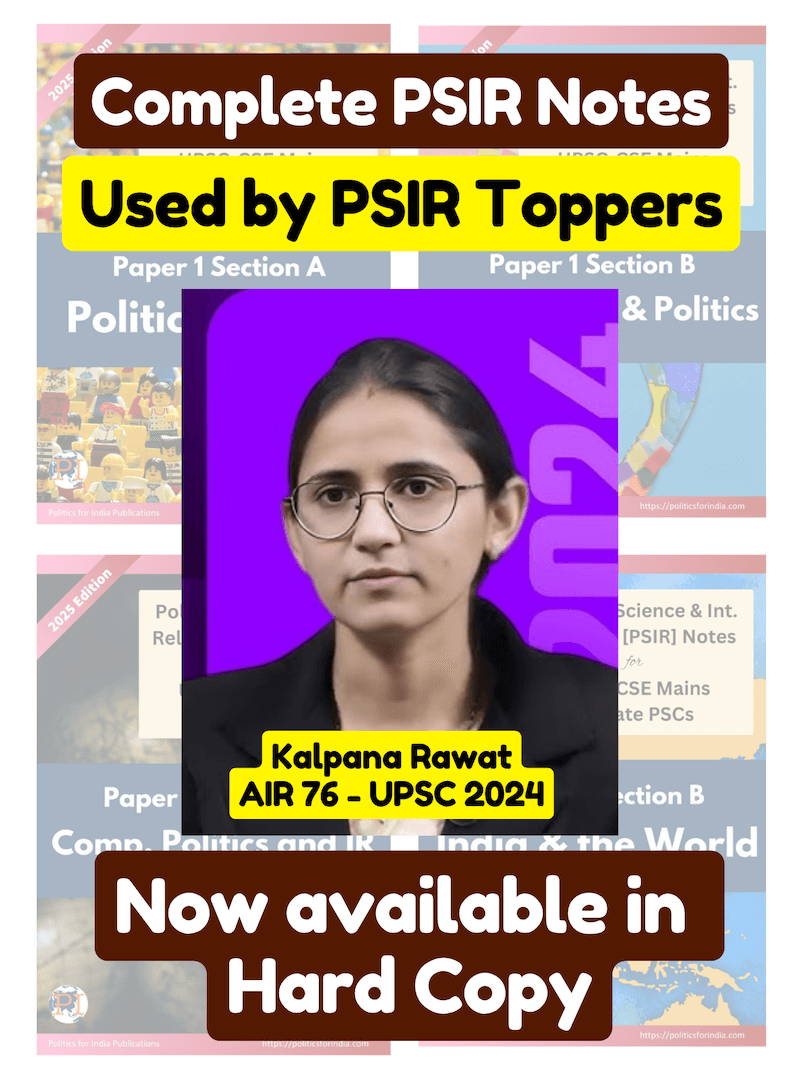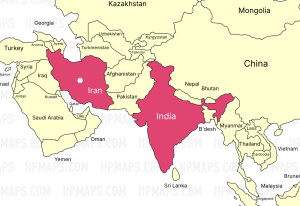India will be the home to the largest number of young population in the globe by 2030. Thus, a robust education system is the need of the hour for the country. With this goal, the National Education Policy (NEP) 2020, brought in several essential changes in the learning framework of India. However, being a politically and economically vital issue and a part of concurrent list, any policy change in education requires the nod of both the centre and the state governments. Consequently, NEP has brought many federal principals to the fore .
1] Current Status of Education in India
India’s education system today faces a paradox. At one end, it is becoming increasingly accessible to all with nearly universal Gross Enrolment Ratio (GER) at the primary level. On the other end, however, India is facing a deep learning crisis, i.e., there is huge lack of quality education in all parts of the country.
According to ASER (Annual Status of Education Report), over 70% of Class 3 children in government schools cannot read a Class 2-level text. This learning crisis in India is also reflected in World Bank’s “learning poverty” index.
Apart from this, large number of students dropout from schools at higher levels. The dropout rates figure around 14% at the secondary level and 56% at higher secondary. This means that almost half of Indian youth is not completing Grade 12.
The Indian education system also faces widespread criticism for being archaic, overly exam-oriented, rote-based, and disconnected from practical life and critical thinking.
To rectify these drawbacks, the government of India pushed for National Education Policy (NEP) 2020, that seeks to bring a paradigmatic shift in Indian education. NEP attempts to align Indian education with 21-st century needs. It is based on five foundational pillars: Access, Equity, Quality, Affordability, and Accountability.
2] Key Features of NEP 2020
NEP aims to fundamentally reorient the system from early childhood to higher education.
At the school level, it replaces the old 10+2 structure with a 5+3+3+4 curricular model. This means the foundational stage (age 3–8) will comprise 5 years of flexible, play-based learning. The next stages are in a 3+3+4 division, each with redesigned pedagogies: a move from rote textbook learning towards more experiential, competency-based education.
It also breaks down the rigid silos between “arts, science, commerce” streams and between vocational and academic tracks. NEP envisions a multidisciplinary education at all levels. It emphasizes skill development and vocational education, proposing that from Grade 6 onwards, every child should have exposure to at least one vocation.
As a major transformative step, NEP proposes the use of mother tongue as the primary medium of instruction at least until Grade 5. Research confirms that children learn best in their native language. Thus, NEP reinforces the long-standing three-language formula in schools – which historically meant Hindi, English and one modern Indian language in Hindi-speaking states, and the regional language, English and Hindi in non-Hindi-speaking states.
In higher education, it proposes Multidisciplinary 4-year UG programmes with multiple exit points. This flexible timeline, along with a credit bank system (Academic Bank of Credits), allows learners to pause and resume education or even transfer credits between institutions.
NEP also aims to dismantle the decades-old affiliated college system. It envisions that by 2035, all colleges currently affiliated to a state university should either evolve into autonomous degree-granting colleges or get consolidated into cluster universities. This will reduce the burdens on affiliating universities and give colleges academic freedom.
Digital learning is one of the key focus areas of NEP, along with the inclusion of Indian knowledge systems. It calls for an increased integration of EdTech – from virtual labs to AI-based educational software – and creation of content in regional languages for digital platforms.
3] Federal Tensions Arising from NEP
India’s Constitution places education in the Concurrent List, meaning both Parliament and state legislatures have the power to make laws on the subject.
In principle, this arrangement is meant to foster a cooperative partnership – a strong national vision for education coupled with flexibility for states to innovate and adapt. In practice, however, education federalism has been rife with friction, and the NEP 2020 has brought many of these underlying tensions to the fore.
A key issue is the de facto centralization of decision-making in NEP. The manner in which NEP 2020 was formulated and is being pushed has raised concerns about encroachment on states’ autonomy in this crucial sector.
The Union government has nudged implementation through centrally sponsored schemes – for instance, it launched PM e-Vidya for digital education, the STARS project with World Bank aid to support states, a new PM SHRI scheme to develop NEP exemplar schools, etc. The states, however, have discretion in how far to adopt NEP recommendations.
A major flashpoint in NEP implementation is language policy. Education might be concurrent, but language is a state subject and often an emotional issue tied to identity. States like Tamil Nadu, Kerala, and West Bengal fear backdoor Hindi imposition under the three-language formula. Tamil Nadu has categorically refused NEP and continues with its two-language policy (Tamil + English). Similarly, Maharashtra has formed a new language of Policy committee.
Another contested aspect is curriculum standardization and content control. Education being concurrent means both Centre and states develop curricula. In theory, NEP 2020 envisions a National Curriculum Framework (NCF) with flexibility for “local flavour”. In practice, however, states fear a diminution of their role in curriculum design.
What students learn about history, politics, culture affects the narratives of nationhood and citizenship. States with different ruling ideologies will resist what they see as distortions or biases. Textbook revisions or the inclusion or exclusion of languages (like Sanskrit vs Tamil texts) can become ideological.
The new NCF 2023 for School Education was drafted centrally by NCERT aligning with NEP, and while states were consulted, many feel key decisions are being made in New Delhi. For example, NCERT’s controversial deletions of certain chapters (on Mughal history, the 2002 riots, climate change, etc.) in 2023 editions of textbooks were criticized by states like Kerala, Tamil Nadu, and Karnataka as reflecting a unilateral ideological stance.
The centralization of entrance exams like CUET and NEET is another such flashpoint. States criticised it over equity concerns because, CUET, though optional for state universities, creates pressure to conform to CBSE-centric content.
The state’s critique also includes NEP’s silence on reservations and alleged anti-social justice bias. States with a social justice agenda oppose NEP’s merit-based entrance exams and private-sector orientation, fearing marginalisation of disadvantaged groups.
While there are multiple such contestations, the common thread in all these case studies is the assertion of federal space by states, or simply a reaction to unilateral central decisions.
4] Political Economy of Education Federalism
Education in India is not merely a social sector, it serves both developmental and political purposes. Control over education gives governments influence over language use, cultural narratives, youth socialization, and distribution of economic opportunities – all of which are powerful tools in politics. Thus, both Union and state governments have strong stakes in education, and consequently this sphere often reflects wider ideological contests in Indian federalism.
Regional parties assert identity and cultural autonomy through education policy (e.g., DMK in Tamil Nadu, TMC in Bengal).
On top of it, fiscal asymmetries add another layer. The Union government, by virtue of collecting the majority of revenue holds the purse strings for many developmental programs, including education. It then distributes funds to states through various schemes.
This arrangement inherently gives the Centre more say, it can design scheme guidelines which the states must follow to receive funds. Over time, this has led to what some call “federalism by finance”.
For example, the Central government made adoption of NEP 2020—including its three‑language formula—a prerequisite for states to receive central funding under the PM SHRI and Samagra Shiksha schemes. Tamil Nadu strongly rejected this conditionality, filing a suit in the Supreme Court. The state has accused the Centre of “financial blackmail” for withholding funds due to its refusal to educate in Hindi, insisting that education policy remains a state subject.
There is also a cultural capital and social justice dimension to it. NEP encourages uniform entrance exams, although states are free not to opt it. Such exams often favour English/Hindi languages as well as CBSE based curriculum.
5] Way Forward
The lack of functional cooperative institutions (like Inter-State Council or CABE) compounds these tensions. A GST-style Education Council or more active Inter-State Council can foster consensus on reforms.
Secondly, one size cannot fit all in a country as varied as India. The NEP document itself acknowledges need of such flexibility. However, it must manifest in practice. For instance, on the issue of language, the Centre could formally allow states to adapt the three-language formula as per their context. Also, reciprocal learning (e.g., Tamil in North India, Hindi in the South) should be encouraged instead of one-sided imposition.
Financial support and autonomy for states should increase. The Centre should not withhold funds for NEP non-compliance. Instead, it should reward states based on performance outcomes.
The issue of Equity and inclusion is one non-negotiables where both the centre and the states converge. Federal disputes must not derail this larger goal. Thus it should be ensured that central exams do not disadvantage rural students. Further, reservation policies in higher education, being a sensitive subject, should be respected by the Centre – any reform must carry forward affirmative action.
Ultimately, the way forward must embody the spirit of “Ek Bharat, Shreshtha Bharat” (One India, Great India) but through the route of “Unity in Diversity”. India’s federal structure is not a hurdle to progress; rather, it’s a means to tailor development to local needs while keeping national objectives in sight.
6] Conclusion
Education in India is the crucible where constitutional ideals, regional identities, and national aspirations converge. NEP 2020 is a bold attempt at systemic reform, but without Centre–state partnership, it risks being lost in political and ideological crossfire.
By enabling dialogue, flexibility, and shared ownership, India can implement NEP in a way that not only improves outcomes but also strengthens the federal structure envisioned in the Constitution. In Ambedkar’s words, “the spirit in which a law is administered” matters more than its text. NEP’s success will hinge not just on policy design but on how inclusively and democratically it is implemented.















